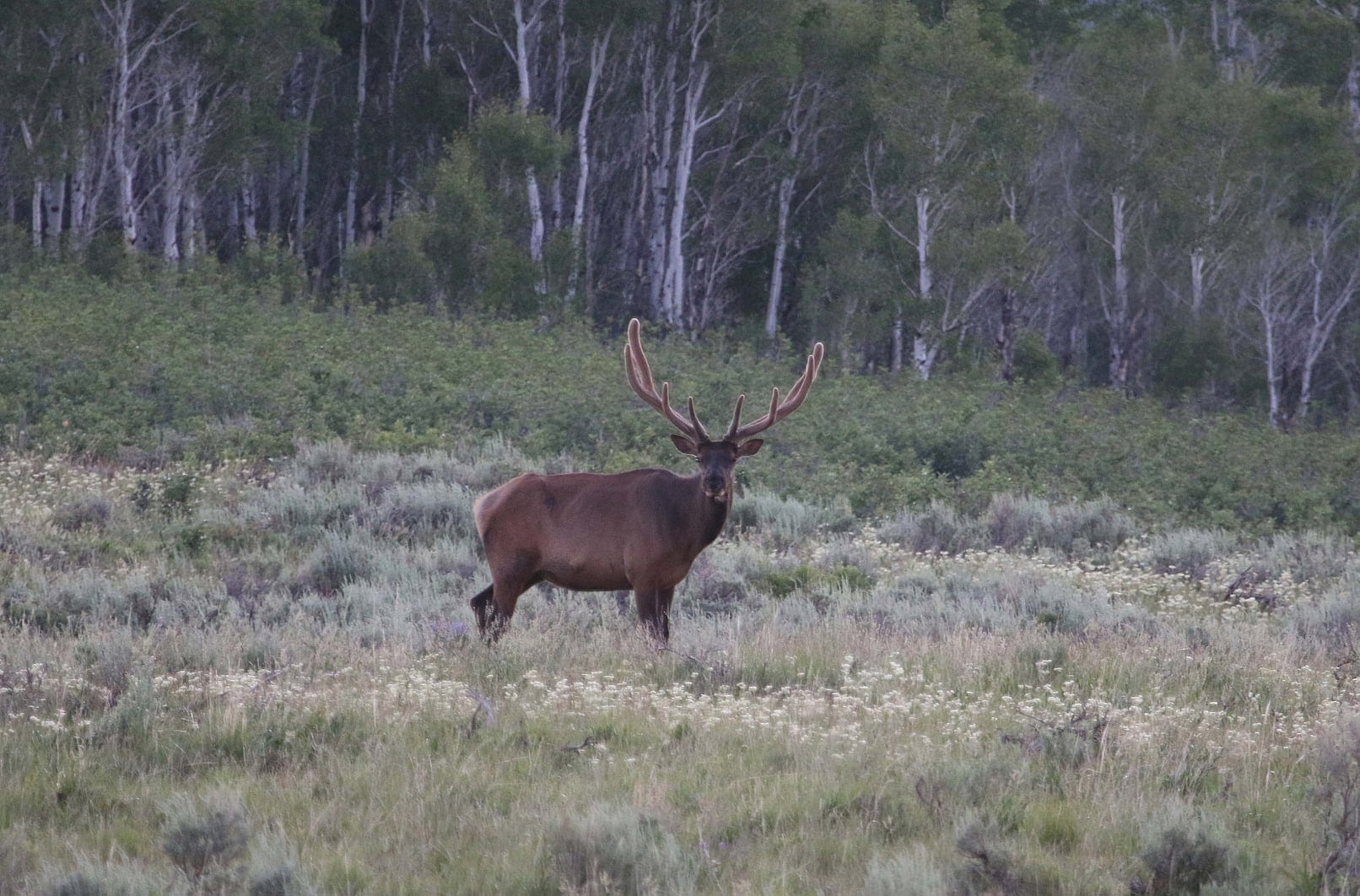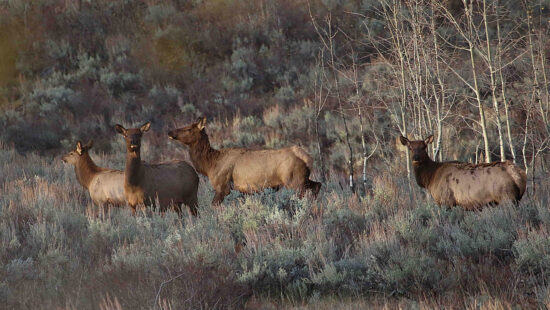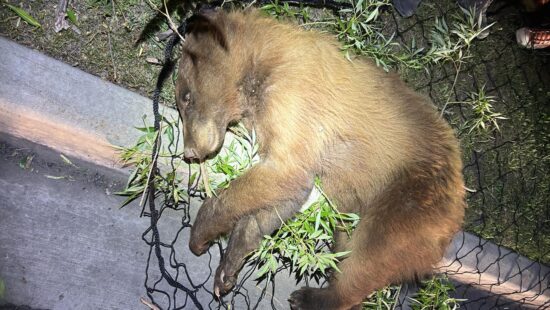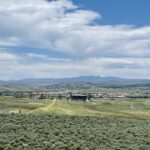News
DWR proposed new 10-year Utah Elk Management Plan
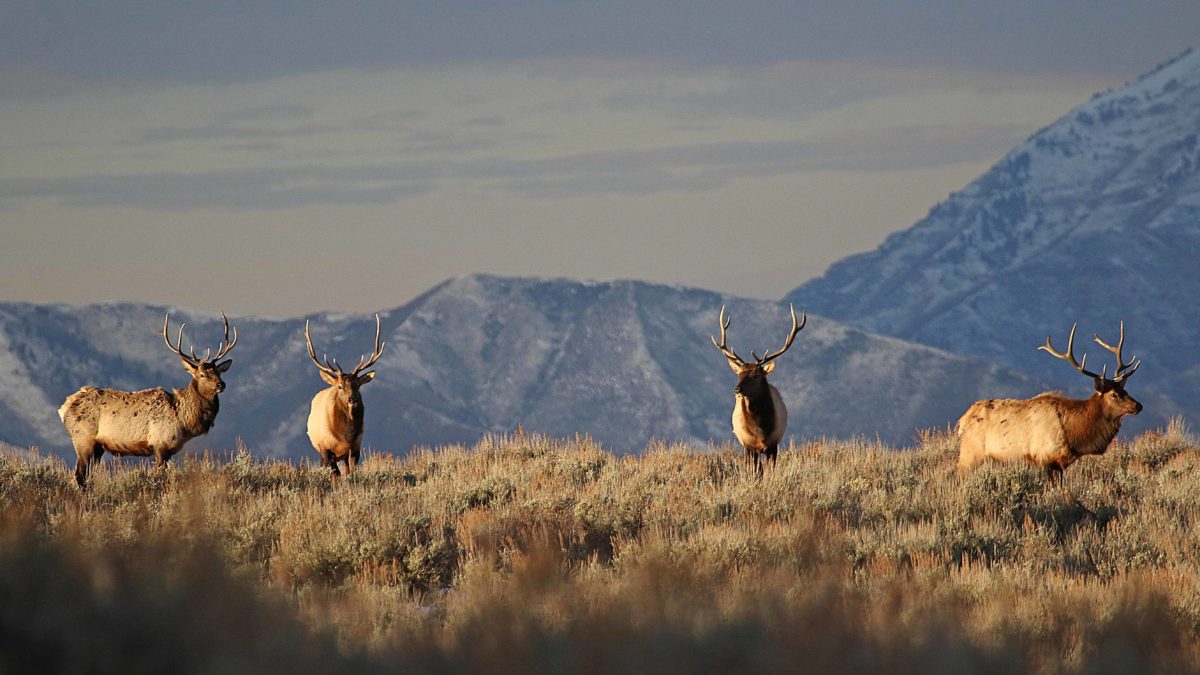
Utah Division of Wildlife Resources is proposing a new 10-year Utah Elk Management Plan, which includes several changes to elk hunting. Photo: Utah DWR.
SALT LAKE CITY — The Utah Division of Wildlife Resources is proposing a new 10-year Utah Elk Management Plan, which includes several changes to elk hunting. The DWR also has a proposal for the 2023-24 big game hunting season dates, along with a few other recommendations, and is seeking the public’s feedback on the proposals.
The current statewide elk management plan was approved in 2015 — with an update in 2020 — and is set to expire in December. A diverse 19-person committee was convened to help create the updated elk management plan. The committee included members from state and federal agencies, conservation groups, and academia, as well as private landowners, hunters, and members of the public. This new proposed management plan would go into effect in 2023 and would guide the state’s elk management until 2032, with a mid-plan review in 2028. The plan was developed using in-depth elk research, the current status of Utah’s elk herds, and also public surveys.
The individual elk-management unit plans will be revised in 2023 and will go out to the public for feedback if they include changes to hunting unit boundaries or population objectives.
The proposed statewide elk management plan outlines a variety of goals and strategies regarding population objectives, ways to preserve and maintain habitat across the state, and different recreation opportunities like hunting.
“The demand for elk hunting in Utah has continued to grow over the years,” DWR Big Game Coordinator Dax Mangus said. “In 2014, the over-the-counter bull elk permits sold out in 77 days, and the spike-only elk permits sold out in 84 days. In 2022, any bull elk permits sold out in five hours, and the spike elk permits sold out in only nine hours. We are proposing several strategies to respond to these dramatic increases in demand for general-season elk hunting opportunities, as well as find ways to address continued ‘point creep’ in the limited-entry system.”
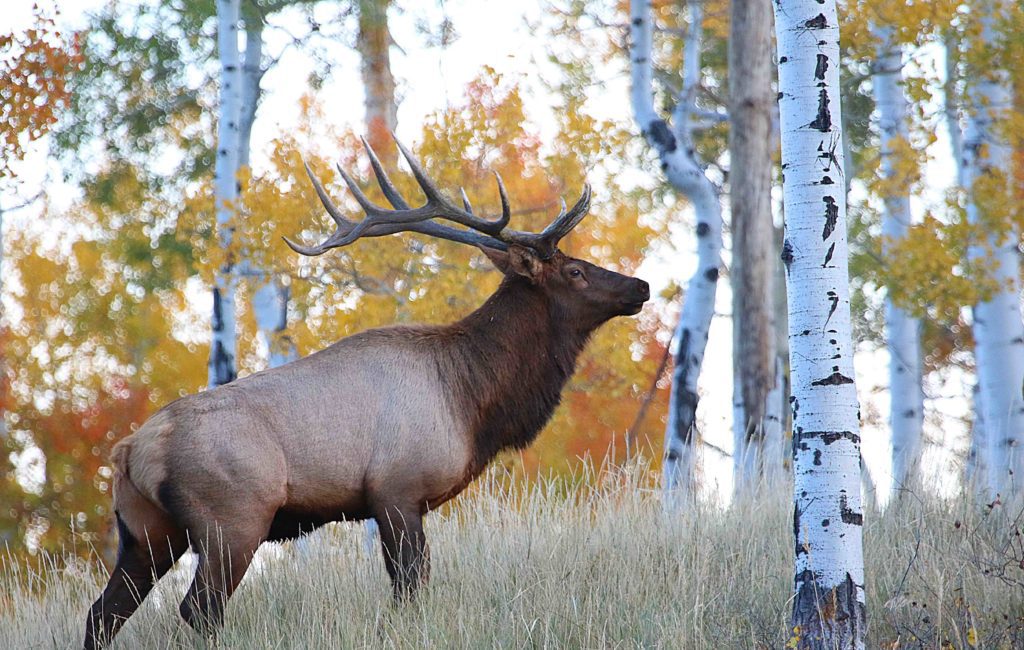
The new proposed plan includes a few changes to elk hunting in Utah, including:
General-season hunting changes
Adding six additional general-season hunting units to the any bull elk hunt.
Dividing the current general-season 13-day any legal weapon any bull hunt into two separate seven-day hunts.
Issuing 15,000 general-season permits for the early season any-legal-weapon any bull hunt.
Having no cap on permit numbers for the late season any-legal-weapon any bull hunt.
Capping multi-season any bull permits at 7,500.
Expanding the general spike hunt to the Diamond Mountain unit.
Continuing to issue 15,000 spike bull permits each year, with a cap of 4,500 available as multi-season permits.
Creating an unlimited youth general-season elk permit that will be valid during all general seasons on both any bull and spike units.
Limited-entry hunting changes
Restructuring the harvest age objectives for traditional limited-entry units to include three age objectives: 6 ½ to 7 years old, 6 to 6 ½ years old, and 5 ½ to 6 years old.
Adding the mid-season any legal weapon hunt on most traditional limited-entry elk units.
Adjusting the weapon splits for traditional limited-entry hunts to place more of the any-legal-weapon hunts in the mid-season hunt.
Moving the season dates for the beginning of the hunt and end of the traditional limited-entry archery season to four days later than in past years.
Adjusting the length of the early any-legal-weapon traditional limited-entry elk hunt to five days long.
Maximizing hunting opportunities by maintaining the units/hunts managed for restricted-weapon hunts, September archery hunts, and HAMS hunts (hunts that allow the use of handgun, archery, muzzleloader, and shotgun).
Developing and recommending adaptive opportunity limited-entry hunts to seize unusual opportunities. Examples include December archery hunts on limited-entry units, additional restricted weapon or HAMS hunts on units with very high success rates and/or high bull-to-cow ratios, and limited-entry hunts on general-season units using unique timing or the migration of available bulls.
“The major theme for the elk plan committee — and the resulting proposed plan — has been to increase elk hunting opportunity while maintaining quality through increased challenge and creativity,” Mangus said. “We believe these proposed changes will help reach those goals. The recommended changes are all related and provide synergy to the overall management plan, with the general-season hunt changes providing additional opportunities and the limited-entry changes helping maintain the quality of the hunt.”
The DWR is also proposing the 2023-24 hunting season dates for big game species, including deer, pronghorn, and elk. The season dates for 2024 will remain the same length and during the same timeframes, just adjusting to calendar shifts to maintain the opening day on a Saturday. The proposed season dates for deer and elk hunting are as follows:
Deer
General-season archery: Aug. 19-Sept. 15, 2023
General-season muzzleloader: Sept. 27-Oct. 5, 2023
General-season early any legal weapon: Oct. 11-15, 2023
General-season any legal weapon: Oct. 21-29, 2023
Elk
General-season archery spike bull: Aug. 19-Sept. 8, 2023
General-season archery any bull: Aug. 19-Sept. 20, 2023
General-season muzzleloader: Nov. 1-9, 2023
General-season any legal weapon spike bull: Oct. 7-19, 2023
General-season early any legal weapon any bull: Oct. 7-13, 2023
General-season late any legal weapon any bull: Oct. 14-20, 2023
Limited-entry elk archery: Aug. 23-Sept. 19, 2023
Limited-entry late-season archery elk: Dec. 2-17, 2023
Limited-entry elk early any weapon: Sept. 20-24, 2023
Limited-entry elk HAMS/restricted weapons: Nov.11-30, 2023
Limited-entry any legal weapon hunt on 14 units that didn’t previously have a mid-season hunt: Oct. 7-19, 2023
Limited-entry late-season any legal weapon hunt on Diamond Mountain: Nov. 11-19, 2023
“We will also recommend a general-season archery antlerless elk hunt in the spring of 2023,” Mangus said. “The intent of this recommendation is to address ‘point creep’ for antlerless elk and to provide a new opportunity for archery elk hunters that will help increase the harvest of antlerless elk.”
Due to some of the proposed elk hunting changes in the new statewide elk management plan, several new general-season hunts are also being proposed on a few any bull elk hunting units. A few new limited-entry elk hunts are also being proposed due to some hunting unit boundary changes, as well as several new archery elk hunts.
The DWR is also recommending a few new general-season deer hunts and pronghorn hunts due to some adjusted hunting unit boundaries.
“Some of the new hunts and unit boundary changes for deer will allow us to manage the populations and conduct buck hunting on these units at the same scale,” Mangus said. “The changes will also allow for more precision in addressing emerging chronic wasting disease concerns in some of the areas.”
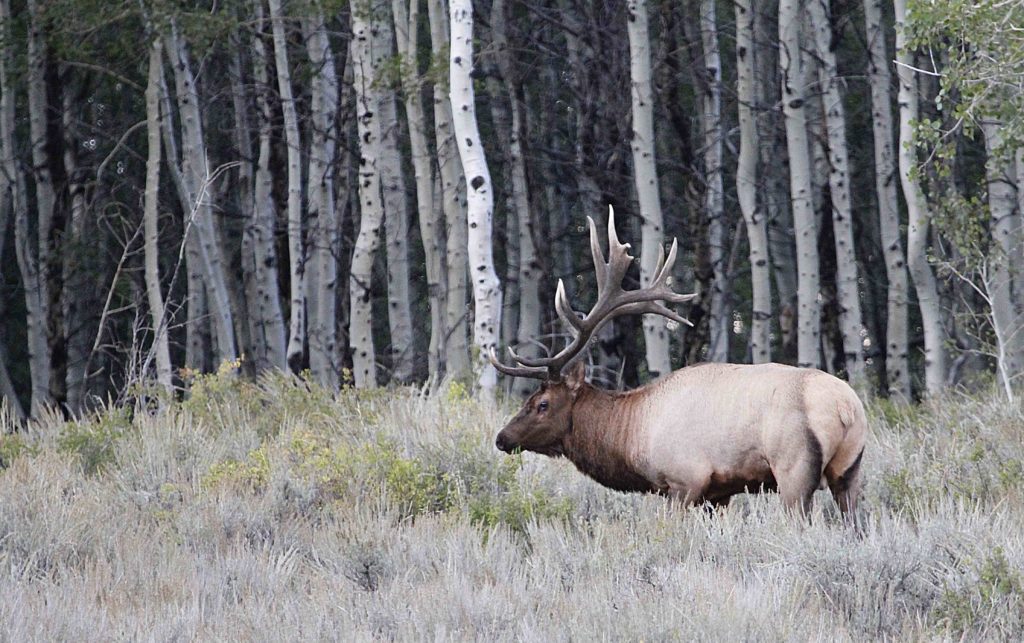
The DWR also proposed the season dates for the 2023-2024 hunting seasons for once-in-a-lifetime big game species: bighorn sheep, bison, mountain goats, and moose. Several new hunts were also proposed, including:
New hunt for desert bighorn sheep on the Mineral Mountains in 2024
New hunt for bison on the Book Cliffs, Little Creek/South Unit
New archery hunt for mountain goats on the Beaver Unit (and discontinuing the North Slope/South Slope, High Unitas Central Unit archery hunt)
The Utah Wildlife Board tasked the DWR with establishing a technology committee to revisit which types of new technologies and weapons should be allowed for hunting in Utah. A diverse committee of various stakeholders was formed to create some updated rules. As a result, the DWR is recommending a few changes to only restricted weapons hunts for archery, handguns, muzzleloaders, shotguns, and rifles, including during the HAMS (handgun, archery, muzzleloader, and shotgun) hunts.
“Utahns value wildlife and hunting, and they have a constitutional right to hunt,” DWR Sgt. Gabe Patterson said. “Regulated hunting is the primary source of funding for conservation and wildlife management, and the DWR wants to preserve hunting traditions into the future. However, new and emerging technologies could present ethical challenges and negatively influence public support for hunting — which could decrease conservation funding. Technological advancements could also limit opportunity and influence the experiences of future hunters. The DWR is committed to evaluating the use of new and emerging technologies for hunting and believes in the benefits of common-sense regulations.”
The proposed changes to weapon technologies include the following:
Archery
Archery equipment will be considered restricted if it meets all of the following specifications:
The bow must be a single-stringed recurve or a longbow.
It must not have sights or any cables, pulleys, cams or attached electronic devices.
Muzzleloader
A muzzleloader will be considered restricted if it meets all of the following specifications. It must:
Be equipped only with a flint percussion cap or a musket cap (209 primers and all other modern ignition types are prohibited)
Be equipped with an ignition system in which any portion of the cap is clearly exposed and visible when the hammer of the weapon is cocked and ready to fire
Be free of any electronic devices
Have only open sights or peep sights
Any weapon (rifle)
A rifle will be restricted if it meets all of the following specifications. It must:
Have only open sights or peep sights
Be free of any electronic devices
Not be a semi-automatic rifle
Handgun
A handgun is considered restricted if it meets all of the following specifications. It must:
Have only open sights or peep sights
Be free of any electronic devices
Have no more than a single barrel 15 inches or less in length, including the chamber
Have a single rear handgrip without any form of a fixed, detachable, or collapsible buttstock
Not have any apparatus or extension behind the rear grip capable of being used to steady the handgun against the body while firing; or a vertical foregrip
Be no more than 24 inches in overall length
Shotgun
A shotgun is considered restricted if it meets all of the following specifications. It must:
Have only open sights or peep sights
Be free of any electronic devices
Be 20 gauge or larger
Fire only size 00 or larger buckshot or slug ammunition
The Cooperative Wildlife Management Unit program is a DWR program that allocates hunting permits to private landowners who then provide hunting opportunities to public and private hunters for a variety of wildlife species. The CWMU program in Utah has opened more than 2 million acres of private land to the public for hunting. The program provides an incentive to landowners to maintain their land as open spaces, improve and preserve the areas of their property that serve as wildlife habitat, reduce depredation issues for landowners and work with the DWR to manage for increased wildlife populations.
There are currently 136 current CWMUs enrolled in the program across Utah. For 2023, the DWR is recommending an allocation of 632 private permits and 101 public permits for the CWMUs. The DWR received 28 CWMU applications for 2023 and recommends the approval of:
18 of 19 renewal applications
3 new applications
6 change applications
The DWR also oversees the Landowner Association program. This program provides an opportunity for landowners whose properties are located on limited-entry hunting units and provide habitat for deer, elk or pronghorn to receive transferable vouchers for hunting permits. Depending on the amount of private land enrolled in the LOA program, the association receives a percentage of the total number of limited-entry permits for bull elk, buck deer or buck pronghorn on the unit where the association properties are located.
For 2023, the DWR received one change request from the Diamond Mountain LOA requesting an additional five deer tags and four additional elk tags
The public meetings for the recommendations can either be viewed virtually or attended in person. You can view the biologists’ presentations before the meetings and share your feedback about them on the DWR website. The presentations are also available on the DWR YouTube channel, but comments can only be submitted through the forms on the DWR website.
The public comment period opened on Oct. 25 for each of the five Regional Advisory Council meetings and for the Utah Wildlife Board meeting. Public comments submitted within the online-comment timeframes listed below will be shared with the RAC and wildlife board members at each respective meeting. Members of the public can choose to either watch the meetings online or attend them in person. If you wish to comment during the meeting, you should attend in person — online comments will only be accepted until the deadlines listed below.
The meetings will be held on the following dates and times:
Northern Utah RAC meeting: Nov. 9 at 6 p.m. at the Weber County Commission Chambers at 2380 Washington Blvd. #240 in Ogden. (Online comments must be submitted by Nov. 6 at 11:59 p.m.)
Central Utah RAC meeting: Nov. 10 at 6 p.m. in the Wildlife Resources Conference Room (DWR Springville Office) at 1115 N. Main St. in Springville. (Online comments must be submitted by Nov. 6 at 11:59 p.m.)
Southern Utah RAC meeting: Nov. 15 at 6 p.m. at Southern Utah University in the Hunter Conference Center in the Charles R Hunter Room in Cedar City. (Online comments must be submitted by Nov. 10 at 11:59 p.m.)
Southeastern Utah RAC meeting: Nov. 16 at 6:30 p.m. at the John Wesley Powell Museum at 1765 E. Main St. in Green River. (Online comments must be submitted by Nov. 10 at 11:59 p.m.)
Northeastern Utah RAC meeting: Nov. 17 at 6:30 p.m. in the Wildlife Resources Conference Room (DWR Vernal Office) at 318 N. Vernal Ave. (Online comments must be submitted by Nov. 10 at 11:59 p.m.)
Utah Wildlife Board meeting: Dec. 1 at 9 a.m. at the Eccles Wildlife Education Center at 1157 South Waterfowl Way in Farmington. (Online comments must be submitted by Nov. 22 at 11:59 p.m.)
















